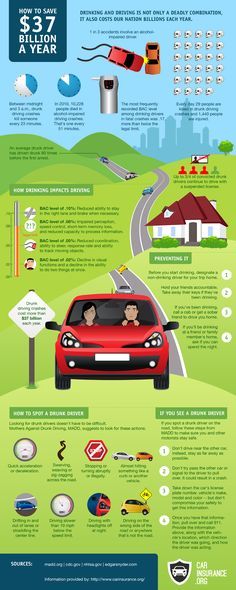April 2016 Marks the 30 Year Anniversary of Alcohol Awareness Month
With this year’s theme, “Talk Early, Talk Often: Parents Can Make a Difference in Teen Alcohol Use,” the month of April will be filled with local, state, and national events aimed at educating people about the treatment and prevention of alcoholism, particularly among our youth, and the important role that parents can play in giving kids a better understanding of the impact that alcohol can have on their lives. Local NCADD Affiliates as well as schools, colleges, churches, and countless other community organizations will sponsor a host of activities that create awareness and encourage individuals and families to get help for alcohol-related problems.
Alcohol use by young people is extremely dangerous—both to themselves and to society, and is directly associated with traffic fatalities, violence, suicide, educational failure, alcohol overdose, unsafe sex and other problem behaviors, even for those who may never develop a dependence or addiction. Adolescence is a time of heightened risk-taking and as alcohol and drugs enter the picture, parents are faced with a unique set of challenges. They can simply sit back and hope their kids will “get through it,” or they can take an active role in learning about alcohol and drugs and helping their kids do the same.
It can be daunting to talk with children about drinking and drug use, but it is well worth the effort parents put into it. In fact, research has shown that kids who have conversations with their parents and learn a lot about the dangers of alcohol and drug use are 50% less likely to use these substances than those who don’t have such conversations.
“Alcohol and drug use is a very risky business for young people,” says Andrew Pucher, President and Chief Executive Officer of NCADD, “and parents can make a difference. The longer children delay drinking and drug use, the less likely they are to develop any problems associated with it. That’s why it is so important to help your child make smart decisions about alcohol and drugs.”
An integral part of Alcohol Awareness Month is Alcohol-Free Weekend (April 1-3, 2016), which is designed to raise public awareness about the use of alcohol and how it may be affecting individuals, families, and the community. During this seventy-two-hour period, NCADD extends an open invitation to all Americans, young and old, to participate in three alcohol-free days and to use this time to contact local NCADD Affiliates and other alcoholism agencies to learn more about alcoholism and its early symptoms.
For more information about NCADD, underage drinking, Alcohol Awareness Month and Alcohol-Free Weekend, visit the NCADD website at: http://www.ncadd.org.
Drugs and Alcohol and in the Workplace

Alcohol and drug use among employees and their family members can be an expensive problem for business and industry, with issues ranging from lost productivity, absenteeism, injuries, fatalities, theft and low employee morale, to an increase in health care, legal liabilities and workers' compensation costs.
The impact of alcoholism and drug dependence in the workplace often focuses on four major issues:
Premature death/fatal accidents
Injuries/accident rates
Absenteeism/extra sick leave
Loss of production
Additional problem areas can include:
Tardiness/sleeping on the job
After-effects of substance use (hangover, withdrawal) affecting job performance
Poor decision making
Loss of efficiency
Theft
Lower morale of co-workers
Increased likelihood of having trouble with co-workers/supervisors or tasks
Preoccupation with obtaining and using substances while at work, interfering with attention and concentration
Illegal activities at work including selling illicit drugs to other employees
Higher turnover
Training of new employees
Disciplinary procedures
In addition, family members living with someone’s alcoholism or drug use may also suffer significant job performance related problems -- including absenteeism, lack of focus, increased health-related problems and use of health insurance.
Alcohol Use
Two specific kinds of drinking behavior significantly contribute to the level of work-performance problems: drinking right before or during working hours (including drinking at lunch and at company functions), and heavy drinking the night before that causes hangovers during work the next day.
And it isn’t just alcoholics who can generate problems in the workplace. Research has shown that the majority of alcohol-related work-performance problems are associated with nondependent drinkers who may occasionally drink too much -- not exclusively by alcohol-dependent employees.
While alcoholism can affect any industry and any organization, big or small, workplace alcoholism is especially prevalent in these particular industries:
Food service
Construction
Mining and Drilling
Excavation
Installation, maintenance and repair
Prescription Drugs
There is always a level of risk when using any drug including prescription or over-the-counter medications.
Drug reactions vary from person to person. If you are taking a drug you haven’t had before, you won’t know how it will affect you. It’s important to follow your doctor’s advice when taking prescription drugs and discuss any side-effects and how this might impact on your work.
The effects of prescription drugs such as benzodiazepines (e.g. Xanax®) can have an impact on your work and you should discuss these with your doctor. Long term use in particular may become problematic.
What can the workplace do?
Work can be an important and effective place to address alcoholism and other drug issues by establishing or promoting programs focused on improving health. Many individuals and families face a host of difficulties closely associated with problem drinking and drug use, and these problems quite often spill over into the workplace. By encouraging and supporting treatment, employers can dramatically assist in reducing the negative impact of alcoholism and addiction in the workplace, while reducing their costs.
Without question, establishment of an Employee Assistance Program (EAP) is the most effective way to address alcohol and drug problems in the workplace. EAPs deal with all kinds of problems and provide short-term counseling, assessment, and referral of employees with alcohol and drug abuse problems, emotional and mental health problems, marital and family problems, financial problems, dependent care concerns, and other personal problems that can affect the employee’s work. This service is confidential. These programs are usually staffed by professional counselors and may be operated in-house with agency personnel, under a contract with other agencies or EAP providers, or a combination of the two.. Additionally, employers can address substance use and abuse in their employee population by: implementing drug-free workplace and other written substance abuse policies; offering health benefits that provide comprehensive coverage for substance use disorders, including aftercare and counseling; reducing stigma in the workplace; and educating employees about the health and productivity hazards of substance abuse through company wellness programs.
Research has demonstrated that alcohol and drug treatment pays for itself in reduced healthcare costs that begin as soon as people begin recovery.
Employers with successful EAP’s and DFWP’s report improvements in morale and productivity and decreases in absenteeism, accidents, downtime, turnover, and theft.
Employers with longstanding programs also report better health status among employees and family members and decreased use of medical benefits by these same groups.
Some facts about alcohol in the workplace:
Workers with alcohol problems were 2.7 times more likely than workers without drinking problems to have injury-related absences.
A hospital emergency department study showed that 35 percent of patients with an occupational injury were at-risk drinkers.
Breathalyzer tests detected alcohol in 16% of emergency room patients injured at work.
Analyses of workplace fatalities showed that at least 11% of the victims had been drinking.
Large federal surveys show that 24% of workers report drinking during the workday at least once in the past year.
One-fifth of workers and managers across a wide range of industries and company sizes report that a coworker’s on- or off-the-job drinking jeopardized their own productivity and safety.
Some facts about drugs in the workplace:
Workers who report having three or more jobs in the previous five years are about twice as likely to be current or past year users of illegal drugs as those who have had two or fewer jobs.
70% of the estimated 14.8 million Americans who use illegal drugs are employed.
Marijuana is the most commonly used and abused illegal drug by employees, followed by cocaine, with prescription drug use steadily increasing.
Per The National Council on Alcoholism
The High Cost of a DUI


